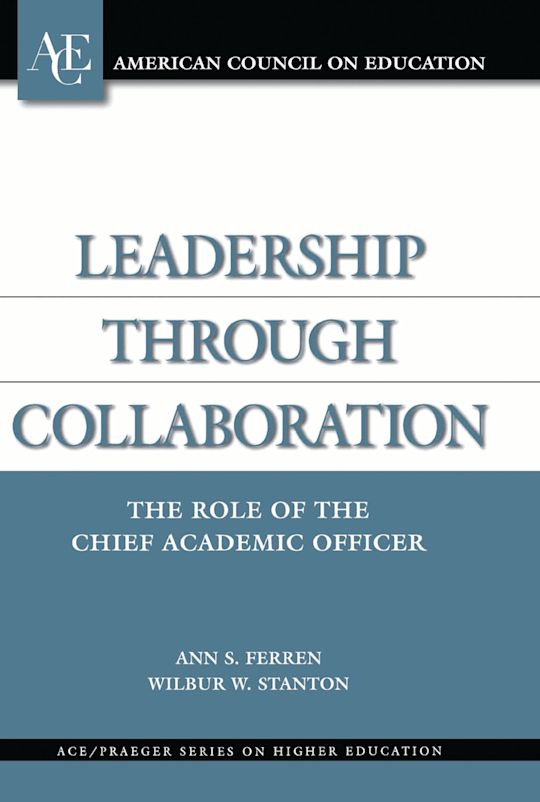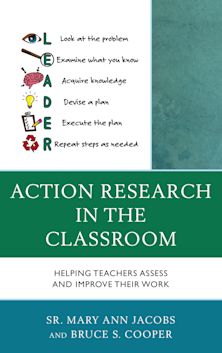Leadership through Collaboration
The Role of the Chief Academic Officer
Leadership through Collaboration
The Role of the Chief Academic Officer
You must sign in to add this item to your wishlist. Please sign in or create an account
Description
This book is organized around 11 topics, including the skills and personal qualities needed to provide effective academic leadership; strengthening the infrastructure for academic affairs through strategic planning, facilities planning, and technology integration; the importance of developing new resources and linking them to academic priorities; academic entrepreneurship; assessing academic quality and improving programs and services; continuous improvement; the central importance of investing in the faculty; and improving academic decisions.
The chief academic officer must be the voice for the campus's academic purposes and a source of energy in supporting the activities of others. Collaboration with colleagues across the institution is key to Ferren and Stanton's approach. Their experiences in administrative roles, ranging from department chair to provost, have provided them with the ability to conduct and utilize many studies, including budget adequacy modeling and salary equity studies. These are issues for which the authors have been responsible for implementation and decision-making, allowing them to understand that collaborative processes and partnerships-such as chairs with deans, deans with vice presidents, faculty with administrators, or the CAO with members of the president's cabinet-are as important as informed decision-making. Because CAOs are less likely to read what business officers and vice presidents for administration read, this book attempts to integrate differing institutional perspectives and explain processes and criteria. CAOs can tailor their decisions to institution circumstances and solve problems with greater insight.
Table of Contents
2 Academic Leadership: Collaborating for Institutional Effectiveness
3 Strategic Planning: Linking Campus Environment and Academic Purpose
4 Facilities Planning: Linking Campus Environment and Academic Purpose
5 Technology Integration: Improving Learning and Productivity
6 Academic Entrepreneurship: Marketing Intellectual Capital
7 Program Review: Pursuing Academic Quality and Cost-Effectiveness
8 Continuous Improvement: Enhancing Value, Service, and Efficiency
9 Faculty Workload: Understanding Productivity and Equity
10 Faculty Compensation: Applying Equity, Market, and Merit
11 Improving Academic Decisions: Using International Research
12 References
13 Index
Product details
| Published | 28 Feb 2004 |
|---|---|
| Format | Ebook (Epub & Mobi) |
| Edition | 1st |
| Extent | 344 |
| ISBN | 9781461734635 |
| Imprint | Rowman & Littlefield Publishers |
| Series | ACE/Praeger Series on Higher Education |
| Publisher | Bloomsbury Publishing |
About the contributors
Reviews
-
The timing of Ann Ferren and Wilbur Stanton's book on collaborative academic leadership is ideal. Just as we are entering another 'new' era of crisis and change in higher education, they have offered a fresh perspective on how academic leaders can succeed against all odds.
William M. Plater, Executive Vice Chancellor and Dean of the Facilities, Indiana University Purdue University Indianapolis (IUPUI)
-
I wish I had had access to this book when I first became a community college president over a quarter-of-a-century ago. It tells you what no one thought of telling you, and answers questions you didn't ask until it was too late. It tells you how to collaborate with business managers and with senior professors, while maintaining the scholar's curiosity. It is a book with an attitude. It's written in simple English. And when the authors write of the chief academic officer 'who wallows', I have to laugh.
Jonathan M. Daube, President, Manchester Community College
-
Ann Ferren and Wilbur Stanton's superb book is strongly recommended, not only for CAO's, but for academic chairs...As they integrate their own experience with new knowledge and insights from this book, chairs will find that their understanding of collaborative decision making, their role in strategic leadership, effective communication, and alignment between their department goals and university goals are all increased.
Ann F. Lucas, Professor Emerita, Fairleigh Dickinson University



































